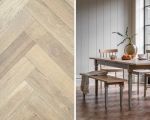How to Build a DIY Desk for Your Home Office: Step-by-Step Guide
- 1 - Why Build a DIY Desk for Your Home Office?
- 2 - Gathering the Materials for Your DIY Desk
- 3 - Designing Your Desk: Key Considerations
- 4 - Step-by-Step Instructions for Building a DIY Desk
- 5 - Personalizing Your DIY Desk
- 6 - Real-Life Case Study: DIY Desk Success Story
- 7 - Why Choose Improvement for Your DIY Projects
1. Why Build a DIY Desk for Your Home Office?
Building a DIY desk for your home office offers a unique opportunity to create a functional and personalized workspace. Many people choose to build their own desks as it can be more cost-effective than buying a pre-made one, especially when you consider the customization options available. Building a desk also allows you to tailor it to your exact needs—whether you need more storage, a larger surface, or a design that fits into a small or awkward space.
Additionally, constructing your own desk can be a rewarding experience. It’s an opportunity to learn new skills, and you’ll have a sense of pride in the finished product. Whether you’re working from home full-time or need a desk for occasional use, a DIY desk can significantly enhance your work environment and productivity.
2. Gathering the Materials for Your DIY Desk
Before you start building your desk, it’s important to gather all the necessary materials. Depending on the design you choose, the materials may vary, but here’s a general list of what you might need:
- Wooden Boards: For the desk top, you can use plywood, MDF, or solid wood boards. Choose a material based on your desired aesthetic and durability.
- Legs: You can either buy pre-made desk legs or build your own from wood or metal. Some people also use repurposed items like old table legs or pipe fittings for a more industrial look.
- Screws and Wood Glue: These are essential for assembling the desk frame and securing the surface. Make sure to use screws that are the right length for the material.
- Finishing Materials: Sandpaper, paint, wood stain, or polyurethane will help finish the surface and protect the wood from wear and tear.
- Tools: Basic tools needed for the project include a saw (for cutting the wood), a drill (for holes and screws), a measuring tape, and a level to ensure everything is straight.
Ensure that you have all your materials before beginning the construction process. This will help the process go smoothly and avoid interruptions during assembly.
3. Designing Your Desk: Key Considerations
When designing your DIY desk, consider your specific needs and available space. The desk should be functional first and foremost, but it should also reflect your personal style. Some key design considerations include:
- Size: Measure the space where you plan to put the desk to ensure it fits. Think about the amount of surface area you need for your computer, paperwork, and other office essentials.
- Storage: If you need extra storage, consider adding drawers or shelves under the desk. Floating shelves or side cabinets can also be great space-saving options.
- Ergonomics: Ensure that the desk height is comfortable for long periods of sitting. A desk height of about 28-30 inches is standard, but this may vary based on your height and chair.
- Style: Whether you prefer a minimalist, industrial, or rustic style, choose materials and finishes that align with your aesthetic. Reclaimed wood can give your desk a vintage feel, while metal and glass give it a more modern touch.
Once you’ve considered these elements, sketch your design or use online tools to create a visual plan. This step will help you visualize how everything fits together and ensure you have all the measurements correct before starting the build.
4. Step-by-Step Instructions for Building a DIY Desk
Now that you’ve gathered your materials and finalized the design, it’s time to build your desk! Here’s a simple step-by-step guide for constructing a basic wooden desk:
- Cut the Wood: Measure and cut the wood for your desk top and legs. If you’re not comfortable with power tools, many hardware stores will cut the wood for you.
- Assemble the Frame: Attach the desk legs to the underside of the desk top using screws and wood glue. If you're building the frame from scratch, assemble the side supports first, ensuring everything is square.
- Install Additional Storage: If your design includes drawers or shelves, assemble and attach them to the frame before securing everything in place.
- Sand and Finish: Sand the entire desk to smooth out rough edges and surfaces. Apply a stain or paint for color and finish with a protective coat of polyurethane to help preserve the wood.
- Final Touches: Once everything is dry, place your desk in your home office space, and start organizing your workspace!
Building your own desk can take some time, but with patience and attention to detail, you’ll end up with a beautiful, functional piece of furniture.
5. Personalizing Your DIY Desk
One of the best aspects of building a DIY desk is that you can personalize it to fit your style and needs. Some ideas for adding a personal touch include:
- Adding a Custom Design: Use stencils or decals to add unique patterns or quotes to the surface of the desk.
- Incorporating Lighting: Add LED strips or a desk lamp to make your workspace feel more inviting and functional.
- Using Unique Materials: Incorporate materials like corkboard, chalkboard paint, or glass to create a custom workspace that suits your personality.
Personalizing your DIY desk will help create a work environment that feels uniquely yours, which can be more motivating and comfortable.
6. Real-Life Case Study: DIY Desk Success Story
Meet Sarah, a freelance writer who needed a functional yet stylish desk for her home office. Sarah decided to take on a DIY desk project to create a workspace that matched her minimalist aesthetic and offered plenty of storage for her writing materials. After designing her desk and gathering materials, Sarah followed a simple step-by-step guide to build a beautiful desk that fit perfectly in her small apartment.
With additional storage drawers for her paperwork and a sleek wood finish, Sarah was thrilled with the final result. Not only did she save money by building the desk herself, but she also gained a sense of accomplishment from completing the project. Her DIY desk now serves as the perfect workspace for her creative work.
7. Why Choose Improvement for Your DIY Projects
If you’re ready to take on your own DIY desk project, Improvement can help you get started with all the materials and tools you need. Our wide selection of high-quality supplies ensures that you’ll find everything you need to create the perfect desk for your home office.
Whether you're a beginner or an experienced DIY enthusiast, Improvement provides the resources and guidance to help you succeed in your project. Check out our site for more ideas and products that will elevate your home office setup!








